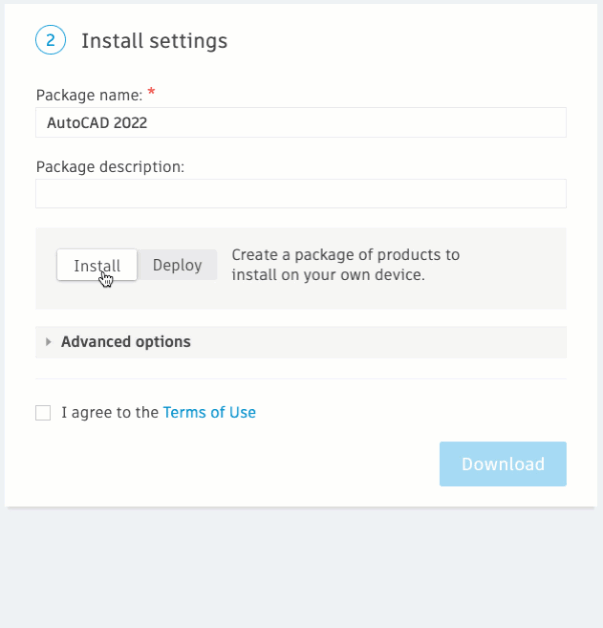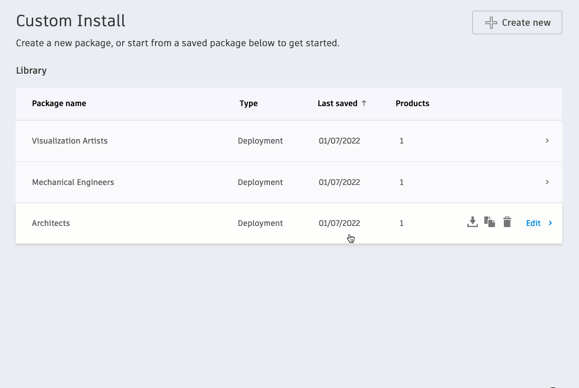& Construction

Integrated BIM tools, including Revit, AutoCAD, and Civil 3D
& Manufacturing

Professional CAD/CAM tools built on Inventor and AutoCAD
4 min read
In February of 2020, Autodesk introduced a fast and timely way to create deployments for our products – in Autodesk Account. Previously, annual releases were our only mechanism for delivering deployment improvements. With this new web-based platform, we can update at any time and avoid disruption during the heaviest install cycles. One of the main advantages of this new platform, because it’s web-based, is that we can update it at any time.
To date, we haven’t provided enough information about what’s changing with our installers and deployments to the Administrator’s community. So, to address that, here are the biggest changes we’ve made between early 2020 and late 2021. We’ll also be providing more updates around specific features as they come out after this.
In the past, you had to find updates in Account, download them separately and apply them to your deployment images. With the number of updates and products you’re managing, this probably took a significant amount of time.
Now, you can pick the version you want, and we’ll automatically include all relevant product and component updates. No more hunting for updates.
When creating deployments for AutoCAD, AutoCAD verticals, Revit, and Inventor, you can now include customization files in the deployment image and they will be copied to the device during installation. AutoCAD .ARG, Revit .INI, and Inventor .XML files are currently supported.
We now provide the ability to create a deployment that includes multiple products, and we’ll include everything you need automatically. If you miss the days of the old Suite installer, you’ll love this!

Advanced Individual users of our software may be looking for some of the old configuration settings they had while running a downloaded installer. These are the same configuration settings we have in the new deployment tools in Account. So, we renamed “Deployments” to “Custom Installs” in the left navigation and opened it up to all users, not just administrators as before. Before downloading, you can select Install to install on your own device or Deploy to create a deployment image for multiple devices.
We understand that our advanced customers need specific package settings for all products in the deployment. We added an option to use Symbolic Links that will reduce the size of deployments or installs that include multiple products. We also added the ability to remove the Autodesk desktop app from deployment installs. See more information in our help article. We have plans to add a few more advanced options in future releases.

When we first introduced online deployment workflows, the most common feedback was that you wanted to save them and not have to recreate all the settings and text entries every time you wanted to make a change. Certainly, this was in our plans and took a bit longer than expected, but we listened to all your feedback about what that would look like. Now, when you land on the Custom Install page, you will see a Library view of all your saved packages, or the option to create one if this is your first time visiting the page.
When you complete a new package, you now have the option to Save it, or Download it as before (which also saves it!). In the Library view, you can quickly Download, Delete or Edit a package by hovering over the package and using one of the quick-action buttons.
Also, with this feature, you will see some minor changes in how the Latest Version and Specify Version options work for each product. Selecting Latest Version will always keep the product up to date with the latest product and component updates, including newer releases. For example, if you have a package created with AutoCAD 2022 on the latest version when AutoCAD 2022.1 is released, all you need to do is download the package again to update your local deployment image with the 2022.1 product and component updates. When AutoCAD 2023 is released, your package will automatically update to that release, and crucially maintain all the settings you used in the previous release.
If you select Specify Version, it will forever remain on that version as long as it is supported by Autodesk. Similar to Latest Version, if you specify a newer version, it will update to the new version and maintain your settings, and you can quickly update your local deployment images. This will allow you to control when your local images are updated.
The ability to choose the Latest Version and automatically keep your packages up to date is only available for Autodesk ID license types. Of course, you can specify the latest available version if Specify Version is your only option.
In the Library view, you can now Duplicate a saved package using the quick-action buttons. This allows you to create a new package with all the same settings and make minor changes. For example, a duplicate package with different product versions, or with different license settings. This is very helpful if you want to maintain older versions of packages when new releases come out. Be sure to change the image location so that you don’t overwrite existing local images.
You can also Rename saved packages by clicking on the name in the Library view. Simple!

As promised, we are not done listening to feedback, making improvements, and building out some amazing new capabilities. Keep an eye on our Technology Manager Community for more news about what we’re releasing. If you want detailed instructions about how to use the new features we listed above, check out our extensive help documentation.
May we collect and use your data?
Learn more about the Third Party Services we use and our Privacy Statement.May we collect and use your data to tailor your experience?
Explore the benefits of a customized experience by managing your privacy settings for this site or visit our Privacy Statement to learn more about your options.